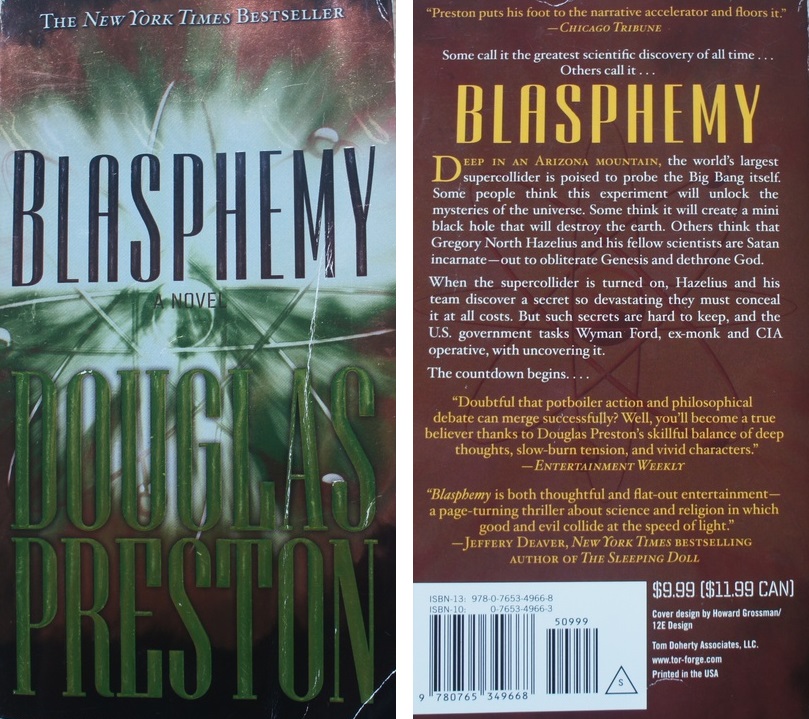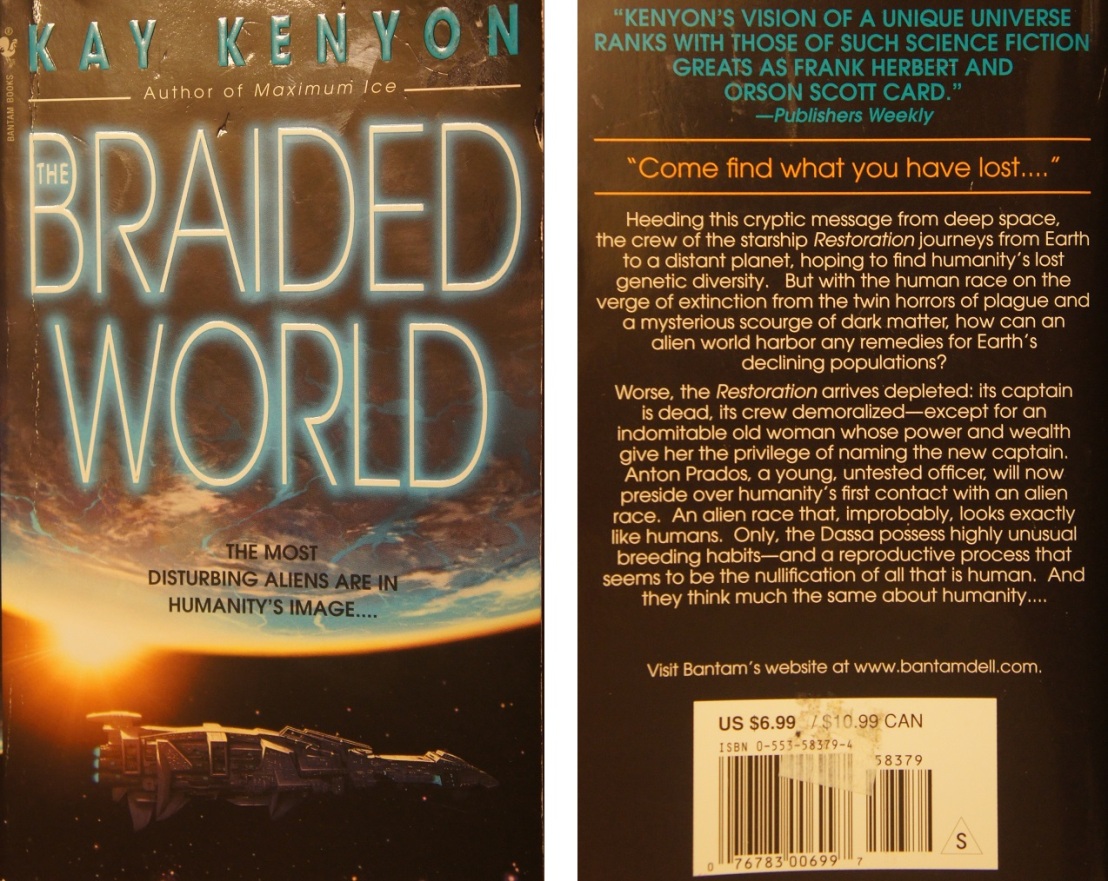
Genre Disclaimer: Blasphemy belongs to the “crappy particle accelerator based thriller (science) fiction” genre. I included science this time, but qualified it with parentheses, as this is definitely a character based thriller mystery. Well, I’m not sure if I should say character: perhaps archetype is better. Or stereotype. Whichever, it’s alright, but not great, although if you like thrillers, then it may be decent. Interestingly enough, it’s actually a minor plot point that the characters have their archetypal personalities and extreme outlooks, but the reasoning was thin and it was a stretch.
Speaking of stretching, while the plot is actually gripping and tense, it’s simultaneously disappointing in that it refuses to let you suspend your disbelief. Rather, it prefers to pretend continually that highly unlikely things (mainly the armed chaos towards the end) would actually occur, while the whole time it’s obvious that it is the authors’ artifice pushing things towards the conclusion and nothing more. The mustache twirling holier-than-thou villainy that occurs towards the end is sigh-worthy, and I found Blasphemy’s depiction of both religious people and mentally troubled individuals blasphemously insulting. Instead of presenting characters who were believably motivated by their faith, belief, and viewpoints, Blasphemy presents mindless extremists who happen to also be religious and/or scientists. Subtlety didn’t just lose this fight: it never showed up. And the paperback is 544 pages.
I’ve also noticed that this is the third clearance book I’ve picked up with a female character named Kate who plays the role of “idealized sexually attractive woman”. (To be honest, that characterizes most of the female characters in this book, which is also a little off-putting.)
Blasphemy was published in 2008 by Forge Books and is apparently the second book in the Wyman Ford series.
COVER ART REVIEW: … wait. The cover is yellow. (and unremarkable.) But why is this picture green?
